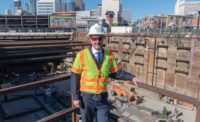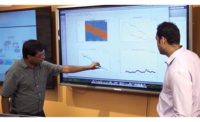

He has walked through the bowels of some of the East Coast's biggest tunneling jobs, from Boston to Washington, D.C., and beyond. But for Gary Almeraris, the biggest thrills of a career packed with notable projects is working on the Second Avenue subway and the extension of the No. 7 line in Manhattan.
 |
| ALMERARIS |
Almeraris also worked closely with MTA engineers and consultants to change the plan for tunneling the Second Avenue subway (SAS). "We hadn't planned to freeze the ground," he says. "We were mining the first tunnel, drilling test holes. In the process, we saw some uncertainties."
Further investigation found an unexpected lack of good rock. So the team decided to use a series of pipes to freeze the east tunnel while going ahead with the west tunnel.
"I've been lucky to have been around a lot of freeze jobs," Almeraris says. That helped him think of the solution.
"Gary was instrumental," says Anil Parikh, Capital Construction's program manager for the $4.45-billion first phase. "He took the lead...and came up with a solution that was successful."
Almeraris' first job, in 1975, was on New York City's 63rd Street Connector, which extended a subway line across the East River. "He brings a unique history and enthusiasm to the work," says Thomas Peyton, project manager for the local construction manager Parsons Brinckerhoff. "He bowls you over with his enthusiasm and knowledge and desire to get the job done."
Graduating from the City College of New York's school of engineering, Almeraris earned a master's degree in management from Worcester Polytechnic Institute. The internship on the 63rd Street Connector set his life course. "I was very fortunate that all these great guys mentored me—the craft workers as well as management," he says. "My mentors got me excited about tunneling. It wasn't something they taught you in school."
It was only natural that Almeraris would ultimately prefer getting down and dirty to sitting in an office: His family tree includes a bricklayer and a Teamster. He recalls a quote from the tunnelers: "Anyone can go over mountains. Real men go through mountains."
He adds, "The underground business is a challenge every day. You never know what you're going to get. You always have to have plan B."
Almeraris is now busy with his next challenge: the SAS's 86th Street station. Skanska and Traylor Bros Inc. hold a $301-million contract to conduct sequential excavation for the future subway station. The job also involves extensive demolition work, excavation support, utility work and the underpinning existing buildings adjacent to the site.
Almeraris says his overall goal is to share his knowledge: "We want to mentor young people, teaching them to go to work and have fun, be safe and, at end of the day—even though it's often a 14-hour day—go home proud of what they did."



